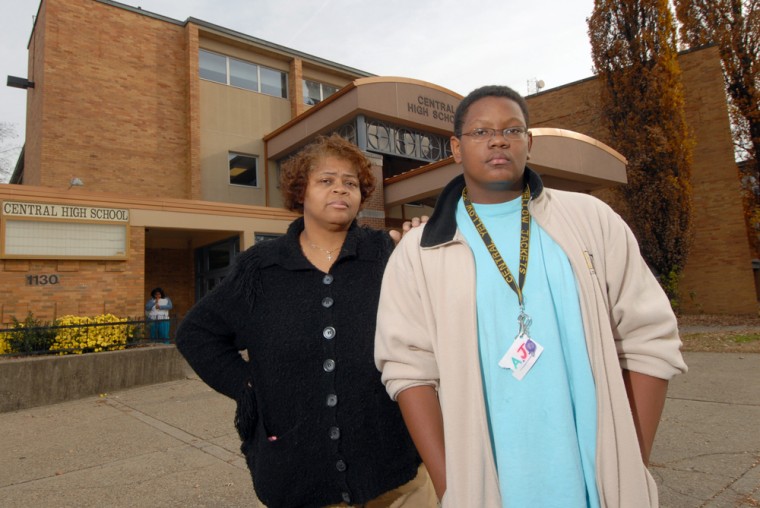The Supreme Court on Thursday rejected school diversity plans that take account of students’ race in two major public school districts but left the door open for using race in limited circumstances.
The decision in cases affecting schools in Louisville, Ky., and Seattle could imperil similar plans in hundreds of districts nationwide, and it further restricts how public school systems may attain racial diversity.
The court split, 5-4, with Chief Justice John Roberts announcing the court’s judgment. The court’s four liberal justices dissented.
Yet Justice Anthony Kennedy would not go as far as the other four conservative justices, saying in a concurring opinion that race may be a component of school district plans designed to achieve diversity.
To the extent that Roberts’ opinion can be interpreted to foreclose the use of race in any circumstance, Kennedy said, “I disagree with that reasoning.”
He agreed with Roberts that the plans in Louisville and Seattle violated constitutional guarantees of equal protection.
The two school systems in Thursday’s decisions employ slightly different methods of taking students’ race into account when determining which school they will attend.
Federal appeals courts had upheld both plans after some parents sued. The Bush administration took the parents’ side, arguing that racial diversity is a noble goal but can be sought only through race-neutral means.
25 years of court oversight
Louisville’s schools spent 25 years under a court order to eliminate the effects of state-sponsored segregation. After a federal judge freed the Jefferson County, Ky., school board, which encompasses Louisville, from his supervision, the board decided to keep much of the court-ordered plan in place to prevent schools from re-segregating.
The lawyer for the Louisville system called the plan a success story that enjoys broad community support, including among parents of white and black students.
The Seattle school district said it used race as one among many factors, relied on it only in some instances and then only at the end of a lengthy process in allocating students among the city’s high schools. Seattle suspended its program after parents sued.
The opinion was the first on the divisive issue since 2003, when a 5-4 ruling upheld the limited consideration of race in college admissions to attain a diverse student body. Since then, Justice Sandra Day O’Connor, who approved of the limited use of race, retired. Her replacement, Justice Samuel Alito, was in the majority that struck down the school system plans in Kentucky and Washington.
Death row decision
Also on Thursday, a divided Supreme Court blocked the execution of a Texas killer whose lawyers argued that he should not be put to death because he is mentally ill.
Scott Louis Panetti shot his in-laws to death 15 years ago in front of his wife and young daughter.
Panetti knows what he did, but believes that he is on death row because he preaches the word of God, his lawyers say.
Panetti’s lawyers wanted the court to determine that people who cannot understand the connection between their crime and punishment because of mental illness may not be executed. The court voted 5-4 to stop his execution.
The Eighth Amendment of the Constitution bars “the execution of a person who is so lacking in rational understanding that he cannot comprehend that he is being put to death because of the crime he was convicted of committing,” they said in court papers.
Texas said the court should reject Panetti’s appeal on procedural grounds. But it also argued that the court should set a tougher standard for mental illness exceptions to capital punishment. Only if a Death Row inmate “lacks the capacity to recognize that his punishment both is the result of his being convicted of capital murder and will cause his death” should his execution be halted, the state said. Panetti is competent on that basis, it said.
The killings took place in September 1992.
History of mental illness
A former ranch hand and native of Hayward, Wis., Panetti had a history of mental problems before his conviction, recording 14 hospital stays over 11 years.
Four courts have said he was competent when he fired his trial lawyers. A jury and two courts rejected his defense of not guilty by reason of insanity. He personally argued that only an insane person could prove the insanity defense, dressing in cowboy clothing and submitting an initial witness list that included Jesus Christ and John F. Kennedy.
Then-Justice Lewis Powell said 20 years ago that a person may not be put to death if he cannot perceive “the connection between his crime and his punishment.”
